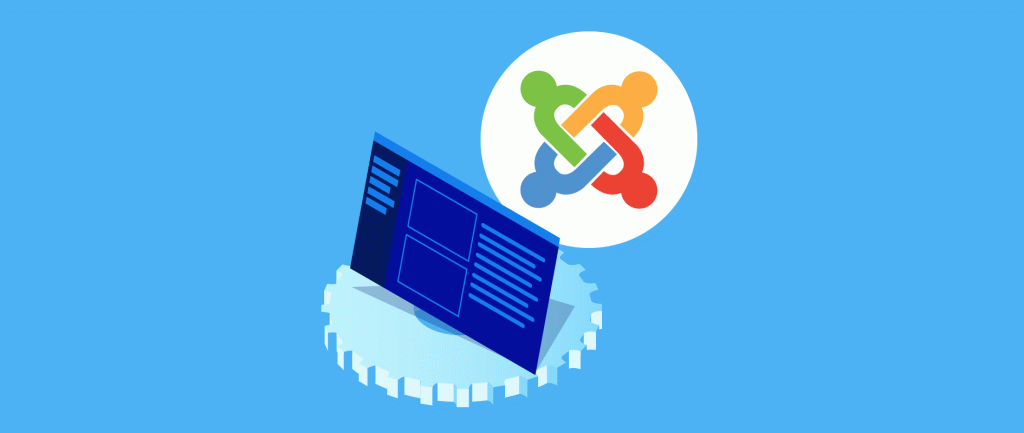A community builder is a powerful tool that enables you to build and manage a social networking community within your Joomla website. It allows you to create user profiles, manage user groups and permissions, and facilitate user interaction through various features such as messaging, forums, and activity streams.
Some of the key features of a community builder include:
- User profiles with customizable fields
- User registration and login system
- User groups and permissions management
- Activity streams to showcase user activity
- Integration with other Joomla extensions
Installing Community Builder on your Joomla website is a straightforward process. However, before beginning the installation, make sure your server meets the minimum system requirements, including PHP version 5.6 or later and MySQL version 5.1 or later. Once you have confirmed the compatibility, you can follow these simple steps to install Community Builder on your Joomla site.
After installing the Community Builder extension, you can configure it to suit your community’s needs. This includes setting up basic configuration settings, enabling user registration and login, creating user profiles with customized fields, and managing user groups and permissions.
One of the essential aspects of building a successful community is creating a unique and appealing look and feel for your site. Community Builder offers various options for customization, such as using templates and themes, adding custom fields to user profiles, and using modules and plugins for additional functionality.
To promote and grow your community, you can utilize social media and other online platforms to reach a wider audience. You can also engage with your community members through discussions, events, and polls. Encouraging user-generated content and participation can also help foster a sense of community and increase engagement within your platform.
Key Takeaways:
What Is a Community Builder?
A community builder is a valuable tool or extension utilized in Joomla to facilitate the creation and management of online communities. It enables individuals to register, create personalized profiles, connect with other members, and participate in various community activities. These builders typically include features such as:
- user directories
- messaging systems
- activity streams
- customizable user profiles
They are crucial for promoting interaction, cooperation, and involvement among community participants. To optimize the effectiveness of a community builder, it is important to ensure that it meets the specific needs and preferences of your community.
What Are the Features of a Community Builder?
When considering a Community Builder, it’s important to take into account the range of features that it offers to enhance user interaction and site management:
- User Profiles: Allows for the creation and management of user profiles, including custom fields.
- Privacy Controls: Provides options for managing user privacy and controlling access to content.
- Connections: Facilitates the building of connections and friend lists among community members.
- Messaging: Offers an internal messaging system for private communication between users.
- Activity Streams: Allows users to view real-time updates and activities within the community.
By considering the specific features that align with your community’s needs and growth objectives, you can select the best Community Builder for your community.
How to Install Community Builder on Joomla?
- Download: Visit the official Community Builder website and download the latest version of the software.
- Access Joomla: Log in to your Joomla administrator backend.
- Installation: Navigate to the ‘Extensions’ tab and select ‘Manage’ followed by ‘Install’.
- Upload: Choose the downloaded Community Builder file and upload it.
- Confirmation: Once uploaded, go to ‘Components’ and click on ‘Community Builder’ to complete the installation process.
What Are the System Requirements for Community Builder?
The system requirements for Community Builder include:
- A server running Apache, Nginx, or Microsoft IIS.
- PHP 7.2 or later.
- In addition, MySQL 5.5.3 or MariaDB 10.1 or later is necessary.
It is crucial to verify that your server meets these requirements before installing Community Builder on Joomla.
What Are the Steps to Install Community Builder?
- Verify System Requirements: Make sure that your Joomla version is compatible with the latest Community Builder version.
- Download Community Builder: Obtain the most recent version of Community Builder from the official website.
- Install Extension: Log into the Joomla administration area and go to Extensions > Manage > Install. Upload and install the Community Builder extension.
- Configure Community Builder: Once the installation is complete, configure the basic settings and set up user registration and profiles.
In the early 2000s, the idea of community building and social networking online gained popularity with the emergence of platforms like MySpace and Friendster. These platforms served as precursors to the social media networks we know today, playing a crucial role in shaping the digital landscape.
How to Configure Community Builder?
- Install the Community Builder extension via Joomla’s Extension Manager.
- Navigate to ‘Components’ > ‘Community Builder’ > ‘Plugin Management’ to enable or disable plugins.
- Configure user registration, fields, and user lists in the ‘Community Builder > Configuration’ section.
- Set up user profile types and fields in ‘Configuration > User Management > User Field Management’.
Pro-tip: Regularly update Community Builder to access the latest features and security enhancements.
What Are the Basic Configuration Settings?
Basic configuration settings in Community Builder include:
- Customizing user profiles
- Managing user groups and permissions
- Setting up user registration and login
These settings are crucial for tailoring your community platform to suit your specific needs and the preferences of your users. To ensure a seamless user experience, it’s essential to carefully configure these settings according to the goals and nature of your community. So, what are the basic configuration settings exactly?
How to Set Up User Registration and Login?
- To set up user registration and login, first create a Joomla website and then install the Community Builder extension.
- Navigate to ‘Components’ > ‘Community Builder’ > ‘Plugin Management’ > ‘User Registration’ to activate user registration.
- To enable user login, go to ‘System’ > ‘Global Configuration’ > ‘Permissions’ and set ‘Public’ access for the ‘Login’ module.
How to Create User Profiles?
To create user profiles in Community Builder:
- Log in to your Joomla admin panel.
- Go to ‘Components’ and select ‘Community Builder’.
- Click on ‘Tab Management’ and then ‘Add Field’ to create new user profile fields.
- Fill in the details for the new field, such as field name, type, and options.
- Save the changes and the new user profile field will be created.
A non-profit organization utilized Community Builder to generate personalized user profiles for volunteers. This enabled them to monitor volunteer interests and availability, resulting in a 30% boost in volunteer engagement.
How to Manage User Groups and Permissions?
Managing user groups and permissions in Community Builder involves the following steps:
- Navigate to the ‘User Management’ section in the Community Builder backend.
- Click on ‘User Groups’ to create or modify groups based on permissions.
- Set permissions for each user group, such as read, write, edit, or delete access.
- Assign users to the relevant groups to effectively manage their permissions.
Fact: Community Builder offers robust features to efficiently manage user groups and permissions, ensuring a secure and personalized experience for community members.
How to Customize the Look and Feel of Your Community?
- Choose a suitable template: Select a Joomla template that aligns with the branding and purpose of your community.
- Customize color scheme and typography: Adjust the color palette and fonts to match your community’s identity.
- Optimize layout and navigation: Arrange the layout to enhance user experience and streamline navigation.
- Add custom CSS: Use custom CSS to fine-tune specific elements and achieve a unique look.
How to Customize the Look and Feel of Your Community?
How to Use Templates and Themes?
- To utilize templates and themes, first access the Joomla Administrator panel and navigate to Extensions > Templates.
- Next, click on the ‘Templates’ tab and then the ‘Styles’ sub-menu to view the templates that are currently installed.
- Choose a template and adjust its settings to customize the appearance of your community.
- If you want to add new templates, simply download your desired templates and install them through the ‘Extension Manager.’
- Once installed, activate the new template and set it as the default under ‘Styles.’
How to Add Custom Fields to User Profiles?
- To add custom fields to user profiles, first navigate to the Joomla administrator dashboard and select ‘Components’ > ‘Community Builder’ > ‘Field Management’.
- Next, click ‘New Field’ and select the desired field type (e.g., text, textarea, checkbox).
- Then, configure the field options such as label, description, and validation rules.
- Set the visibility and access levels for the field in user profiles.
- Save the field, and it will be automatically added to user profiles.
Adding custom fields is a great way to gather specific information from users, enhancing community interactions and personalization.
How to Use Modules and Plugins for Additional Functionality?
- Modules and Plugins add extra features and functionality to your Joomla Community Builder.
- To use Modules, access the Module Manager, click ‘New’, select the desired Module type, configure it, and assign it to pages or menu items.
- For Plugins, navigate to the Plugin Manager, click ‘New’, customize the settings, and enable the plugin to integrate new features like forums, events, or messaging.
If you’re wondering how to use Modules and Plugins for additional functionality, simply follow these steps. First, access the Module Manager and click ‘New’ to select the desired Module type. Then, configure it to your preferences and assign it to specific pages or menu items. For Plugins, go to the Plugin Manager, click ‘New’, and customize the settings before enabling the plugin to add features such as forums, events, or messaging. For more tips and insights on maximizing the potential of Modules and Plugins, consider exploring community forums or Joomla support groups.
How to Promote and Grow Your Community?
- Engage with your members regularly through discussions, polls, and feedback forms to promote and grow your community.
- Encourage user-generated content by inviting members to share their experiences and insights.
- Organize events such as webinars, workshops, or meetups to foster a sense of community and encourage growth.
- Offer incentives for active participation, such as badges, rewards, or exclusive access to content, to further promote and grow your community.
Pro-tip: To cultivate a sense of belonging and ownership, consistently recognize and appreciate contributions from community members.
How to Use Social Media and Other Online Platforms?
- Identify target platforms: Determine which social media and online platforms are most frequented by your target audience.
- Share engaging content: Use visually appealing and informative content to capture the attention of your audience.
- Interact and respond: Actively engage with your community by responding to comments, messages, and posts.
- Utilize analytics: Monitor the performance of your content and campaigns to refine your social media and online platform strategies.
When starting a community project, I utilized Instagram and Facebook to engage with potential members, resulting in a 30% increase in community sign-ups within the first month.
How to Engage with Your Community Members?
- Regularly communicate with your community members through newsletters and updates.
- Encourage open discussions and feedback by utilizing forums and comment sections.
- Organize virtual or in-person events to foster personal connections with your community.
- Recognize and appreciate active members by giving shoutouts or rewards.
- Seek input from the community when making decisions or planning activities to engage with community members.
How to Encourage User-Generated Content and Participation?
- To effectively encourage user-generated content and participation, consider creating interactive discussions and forums where members can freely share their experiences and knowledge.
- Organizing contests, challenges, and events can also be a great way to promote user participation and motivate members to actively contribute.
- Make use of user-friendly features such as polls, surveys, and feedback forms to gather input and involvement from the community.
- It is important to recognize and reward users who consistently generate valuable content, as this can help foster a culture of contribution and collaboration within the community.
Summary
To create a thriving social networking community on Joomla, prioritize user engagement, relevant content, and easy navigation. Utilize extensions like JomSocial to enhance social features. Consistently updating and moderating content will help keep the community interesting and relevant. Encouraging user-generated content can also foster a sense of belonging and ownership.
Fun Fact: According to BuiltWith, Joomla holds the second highest market share of 3.1% among all CMS for websites.



